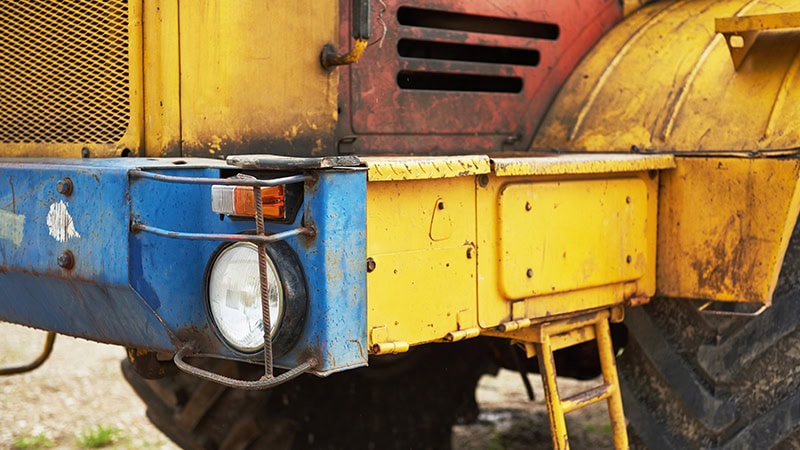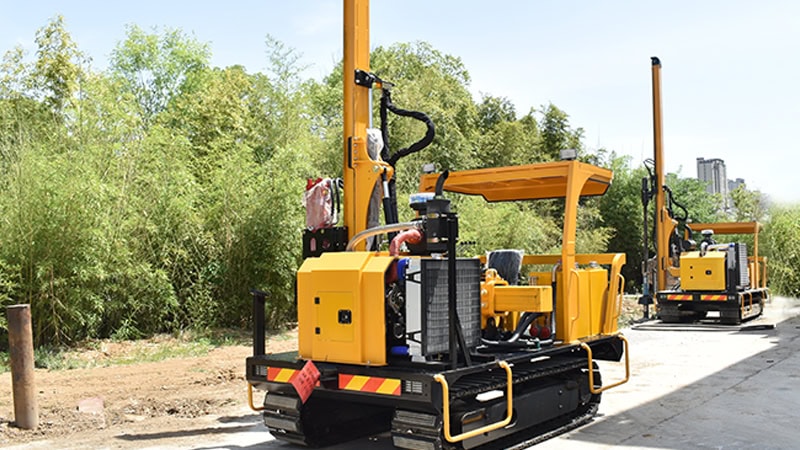
Key Takeaways
- Regular maintenance minimizes unplanned downtime and extends equipment life.
- Daily, weekly, and monthly routines prevent costly downtime.
- Monitoring hydraulic system and cushion stack health improves performance.
- Identifying early signs of trouble prevents further damage.
- Everstar Machinery designs make pile driver maintenance efficient and accessible.
Everstar Machinery’s compact pile drivers are engineered for efficiency, mobility, and adaptability across various construction environments. Unlike large diesel pile hammers that require permanent installation, Everstar’s machines are portable, versatile, and user-friendly.
While their size allows for easy transport and setup, regular maintenance is critical to ensure long-term reliability and performance. Even small pile drivers demand vigilant care to avoid unplanned downtime and excessive wear on the equipment.
This article provides a complete troubleshooting guide for maintaining your pile driver. It covers daily-to-monthly tasks, key warning signs, and the benefits of proactive care.
Why Maintenance Matters for Compact Pile Drivers
Unlike fixed or large diesel systems, Everstar pile drivers experience frequent movement and variable ground conditions, leading to mechanical stress on the cushion stack, catch cap, and hammer body. Understanding the root cause of wear and applying proper maintenance routines helps extend the system’s service life.
Neglecting maintenance can escalate into costly downtime, affecting productivity and pile quality. Regular attention to hammer cushion wear, fluid levels, and system performance helps reduce downtime and avoid unnecessary repairs. Preventing unintended contact between components minimizes the chance of a downtime event.
Planned Maintenance: A Strategic Investment
Maintenance should not be seen as a burden but as a cost-saving measure that directly reduces downtime events and improves overall system uptime. A well-maintained pile driver enhances project planning and reduces unplanned downtime. Investing in maintenance means reducing downtime costs and avoiding production loss.
Maintenance Routines to Avoid Unplanned Downtime

In line with OSHA’s maintenance safety standards for construction, the equipment must be regularly checked for electrical safety, dust protection, and mechanical integrity to prevent ignition risks and ensure safe operation.
Implementing structured maintenance schedules is essential to keeping your pile driving operations at peak performance and significantly reducing the risk of costly, unplanned downtime events. Here is how you can begin:
Daily Checklist:
- Inspect frame, bolts, and hammer body for signs of stress or damage.
- Check fluid levels in the hydraulic system and watch for leaks or accumulated oils in the equipment.
- Remove debris from hammer components and around the cushion stack.
- Verify alarms, controls, and system software functions are working properly.
Weekly Tasks:
- Apply proper lubrication to moving parts, including the trip slot and piston rises.
- Inspect wear-prone parts like the catch cap ring and equipment head.
- Test battery levels if using electric-start systems.
Monthly Care:
- Perform a deep inspection of the hydraulic system and combustion chamber.
- Use available software or diagnostics to analyze critical data trends and highlight issues.
- Check and tighten structural bolts, particularly around the upper cylinder.
Everstar Models: Easy Access for the Hydraulic System Maintenance

Everstar Machinery designs its compact machines with service teams in mind. With modular hammer components and accessible guide plate openings, even complex tasks such as replacing a catch cap or examining the cap contact area can be done efficiently in pile driving process.
Everstar’s compact units’ intuitive layout also supports consistent maintenance schedules. This design minimizes downtime during service windows and helps your team quickly resolve any potential damage issues.
Understanding Catch Cap Contact, and Cushion Stack Degradation
As your pile driver operates, the catch cap and cushion stack absorb intense forces. Over time, wear in these areas can lead to misalignment, unplanned downtime, and reduced performance.
When the catch cap contact is irregular or the cushion stack compresses unevenly, it may result in the hammer slightly lifting or changes in the hammer’s rhythmic hitting frequency. These symptoms signal lead immediate inspection and adjustment.
Preventing Failures to Reduce Downtime
Ensure regular assessment of the cap contact area. Excessive wear here can create increased friction, stressing the hammer body and mechanical systems. Keep guide plates clean and inspect the internal lip of the catch cap.
Replace worn components promptly to reduce downtime and avoid system-wide malfunctions. This simple maintenance task significantly extends machine lifespan and sustains productivity.
Key Warning Signs Your Pile Driver Needs Servicing
Recognizing these early indicators of stress or malfunction can help you avoid a costly downtime event and protect your pile driver from further damage:
- Unexpected vibrations or changes in the hammer’s rhythmic hitting frequency.
- Drop in impact force or irregular pile penetration.
- Visible fluid leakage, dry drop behavior, or discoloration.
- Burning smells or higher heat near mechanical systems.
- Sluggish control response or delayed hammer activation.
Immediate Response Prevents Further Damage
If any of these issues arise, immediately stop operation to prevent unintended contact or potential damage. Consult your manual, a licensed technician, or Everstar’s service team. Addressing issues early helps avoid a costly downtime event.
How Maintenance Saves Money and Reduces Downtime
Proactive maintenance helps minimize downtime and lowers downtime costs. For instance, replacing a worn catch cap or cushion stack early costs less than replacing a full hammer body.
Even slight adjustments, such as correcting the hammer slightly lifting due to improper lubrication, can significantly boost productivity and prevent production loss. Avoiding system downtime protects your budget from unexpected expenses.
ROI and Long-Term Savings
Performing maintenance on schedule is an investment in your operation. This reduces unplanned downtime, extends system lifespan, and protects against excessive wear, directly lowering total ownership costs. Reliable performance translates to minimized unplanned downtime for pile driving equipment and optimized pile installation cycles.
How Everstar Simplifies Maintenance

With Everstar Machinery’s pile driving equipment, service becomes faster and easier. Our machines feature intuitive designs, labeled inspection points, and software integration for better operation oversight.
Everstar equipment integrates diagnostic data collection to support continuous improvement in service scheduling and repair planning. This helps identify recurring issues and refine maintenance intervals.
Designed for Durability and Uptime
Quick replacement of wear parts like the catch cap or cushion stack, plus trusted partner support for repair and parts, ensures your machine keeps running smoothly.
Our GPS system can provide fixed-point automation. This allows you to prepare for planned downtime while reducing overall downtime.
FAQs – Pile Driver Maintenance
How do I know if my compact pile driver is overheating?
Signs include higher heat from the hammer body, discoloration near mechanical systems, and burning smells. Stop operation and inspect fluid levels.
What is reduce downtime?
It refers to strategies that lower the time your equipment is inactive due to failure or repair, saving costs and improving efficiency.
How do you manage downtime?
By conducting regular maintenance, using a troubleshooting guide, and reacting quickly to early warning signs, downtime events can be minimized.
How often should hydraulic oil be replaced in a small pile driver?
Typically, every 300–500 working hours, depending on usage intensity and manufacturer recommendations.
Does frequent transportation affect pile driver maintenance needs?
Yes. Vibration during transit can loosen parts and cause fluid shifts. Always inspect for leaks and loose bolts post-transport.
Conclusion: Keeping Your Pile Driver Running Strong
A proactive maintenance routine is the best defense against downtime, especially for compact Everstar Machinery pile drivers. From daily checks to monthly system reviews, each task contributes to long-term performance and lower costs.
By focusing on maintenance, you not only extend machine life but also ensure consistent productivity. Everstar Machinery designs make this process easier with features that support quick access and diagnostics. Scheduling for both unplanned and planned downtime ensures that your machine stays operational and avoids extended interruptions.
Call to Action: Get Expert Support for Long-Term Uptime
Contact our support team for preventive maintenance training. Explore Everstar’s full range of compact pile drivers designed for performance and care.